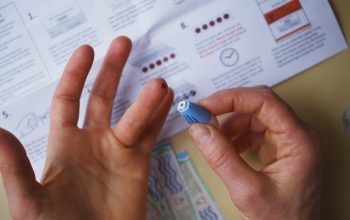Adult hip dysplasia occurs when the hip socket is too shallow to support the hip. Most adults do not realize they have this until their hips start to hurt. Luckily, there are many treatments for adult hip dysplasia today. One such treatment is through physiotherapy. When it comes to physiotherapy look into Andrew Wallis physiotherapist. To better understand adult hip dysplasia and how physiotherapy can treat it, read on.
Symptoms and Diagnosing Adult Hip Dysplasia
The most common reported symptoms of adult hip dysplasia is severe pain in the hip or groin area. Another symptom is worsening pain while sitting, walking, or running. You may also experience difficulty in performing strenuous activities. If you experience this, you may want to get checked to prevent further damage or discomfort. Diagnosing adult hip dysplasia is simple. The usual method is through a physical examination and X-ray. To thoroughly diagnose, a magnetic resonance arthrogram (MRA) may also help.
When it comes to adult hip dysplasia, you will want to get it treated as soon as possible. As time passes, the load can cause your cartilage to degenerate leading to arthritis.
Benefits of Physiotherapy
Physiotherapy is an effective treatment for those with adult hip dysplasia. This is treatment through massage or exercise as opposed to surgery or medication. If you opt for this type of treatment you will want to check out Andrew Wallis physiotherapist. Andrew Wallis has worked for 20 years in this field and can provide you with the best methods of treatment. Moreover, he has worked in both clinical and sports settings.
The key benefits of physiotherapy are many. One such benefit is effective pain management, which leads to fewer needs for opioids. With proper guidance, physiotherapy can also prevent the need for surgery. Additionally, you will also see an improvement in movement and mobility. Physiotherapy has also been able to improve the balance, helping prevent falls.
Other Treatments
For more serious cases a periacetabular osteotomy (PAO) surgery is needed. This type of surgery changes the position of the hip socket in a manner that covers the ball of the hip joint. To normalize alignment cuts around the acetabulum are done. Screws are then put in place to keep the socket in place until the bone has thoroughly healed.
Recommendations
As much as possible you will want to avoid painful surgery. In this regard, the best option is a proper physiotherapy. If your adult hip dysplasia is mild enough, home remedies can help. These remedies are weight loss, lifestyle modification, and exercise. Exercise such as cycling or swimming is a better option rather than high impact sports. All in all, adult hip dysplasia can is a treatable ailment as long as you go to the proper medical professional. The best time to treat this is as soon as you are diagnosed to prevent worsening.




